Search Results
Fine Jewelry University Articles matching: “dark blue satire ring”
Showing only FJU Article results. Click here to show all results.
Fine Jewelry University (Show All FJU Articles)
-
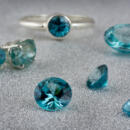
Gem in the Spotlight: Blue Zircon
…, brilliance, and flashes of color or fire just like diamond. Zircon also is known for its variety of colors. Blue zircon is the most popular color. But, zircon can be almost any color you can imagine including red, yellow, orange, brown… yellow variety of Zircon. Matura Diamond is another trade name for colorless Zircon. Starlite is the name for the blue gem variety of Zircon. The color of Starlite is rarely natural, and is almost always heat treated. Of course, the blue…
-

Gem in the Spotlight: Topaz
… comes to mind when I hear people discussing Topaz. You can hear one person say, “I love Topaz; it reminds me of a blue sky.” Then her friend says back, “Topaz may be like a golden sunset, but not the sky.” A third friend will chime in, “…, increase or maintain mental health, and even allow the wearer to go unseen by enemies. In the Victorian era, blue topaz signified faithfulness and love. Gemology As we mentioned at the start of the article, topaz comes in a huge variety…
-
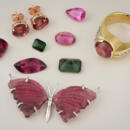
Gem in the Spotlight: Tourmaline
…of these colors have their own names: Rubellite: is red, pinkish red, orangy red, or pink tourmaline. Indicolite: is dark blue, dark violetish blue, or dark greenish blue tourmaline. Paraíba: is a copper colored blue, intense violetish … as their concentration, different colors will be present. Copper, manganese, chromium, and vanadium are the key coloring agents in tourmaline. Another unique facet of tourmaline is its ability to become electrically charged in certain …
-

The Magic of Polarized Light
… in water and glass so that we can see easier. Camera lens/filters: Polarizing lens filters reduce reflections, darken skies, and cuts out glare to help improve photo quality. Some filters can even be rotated on the lens to selectively … with singly refractive (SR) gems like diamond that only bend light in one direction. Gemologists use the term birefringence to refer to how doubly refractive a particular gem is. By far the most common use of polarized light in gemology …
-
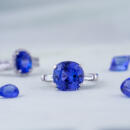
Gem in the Spotlight: Tanzanite
… diamond. But, what makes Tanzanite so popular is its color. Tanzanite’s gorgeous color is a captivating mix of blue and purple. The deep hues of violet, indigo, and blue come together in an unrivaled blend only found in tanzanite. Yet, … commonly known gems like rubies, sapphires, and emeralds. Gemology of Tanzanite Gemologists refer to this gem as blue zoisite. The vast majority (current estimates are around 95%) of tanzanite is heat treated to help bring out the …
-
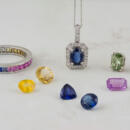
Gem in the Spotlight: Sapphire
… for thousands of years. Kings and queens have always believed that sapphires represent divine favor. The color blue was considered sacred and was worn by priests to show their connection to the sky and heaven. Sapphires were set in the … Anglo-Saxons from 1042-1066, met a beggar one day. King Edward had nothing of value on him except for his sapphire ring, which he generously gave to the beggar. The beggar was really a messenger from God, who later returned the ring to …
-
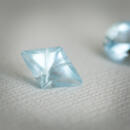
Gem in the Spotlight: Aquamarine
Aquamarine derives its name from the Latin which literally means “seawater,” a tribute to its beautiful blue color. As a member of the beryl family, Aquamarine has some illustrious cousins in addition to a rich history of its… the true spirit of the sea. aquamarine was believed to guarantee a happy marriage Best known for its beautiful blue color, aquamarine was used to bring happiness, eternal youth, and control passion. In the body, aquamarine was thought to… says, “to dream of aquamarine signifies the making of new friends.” Another saying is, “to wear aquamarine earrings brings love and affection.” Aquamarine as a precious stone has always been popular. In ancient times, the aquamarine was …
-
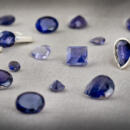
Gem in the Spotlight: Iolite
Iolite is maybe not the first gemstone people think of for their blue-violet jewelry, but it should be near the top of the list. Iolite’s color range of blue, blue-violet, and violet … different colors when observed at different angles, especially with polarized light. Pleochroism is caused by differing absorption of light rays in doubly refractive crystals. Thus, no singly refractive gemstone can exhibit pleochroism. … than Emerald or Topaz. Because of this, some extra care should be taken with your iolite jewelry. Try to avoid wearing it in situations where it might be hit against hard objects to keep it free from cracks and small chips. Iolite is a …
-
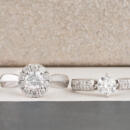
Anatomy of a Ring
Knowing the different parts of a ring can help you make a better decision when choosing a new ring and it can help you know when your ring may need … ring has a shank. This is the technical term for the band of metal that encircles the finger. There would be no ring without the shank. If the ring has a distinct design feature on the top part, the ring shank is generally said to start … point that the design stops. A jeweler will usually add or remove metal from the bottom of the shank when sizing a ring. This can sometimes be done so well that you would never know it was sized looking at the shank with your naked eye. …